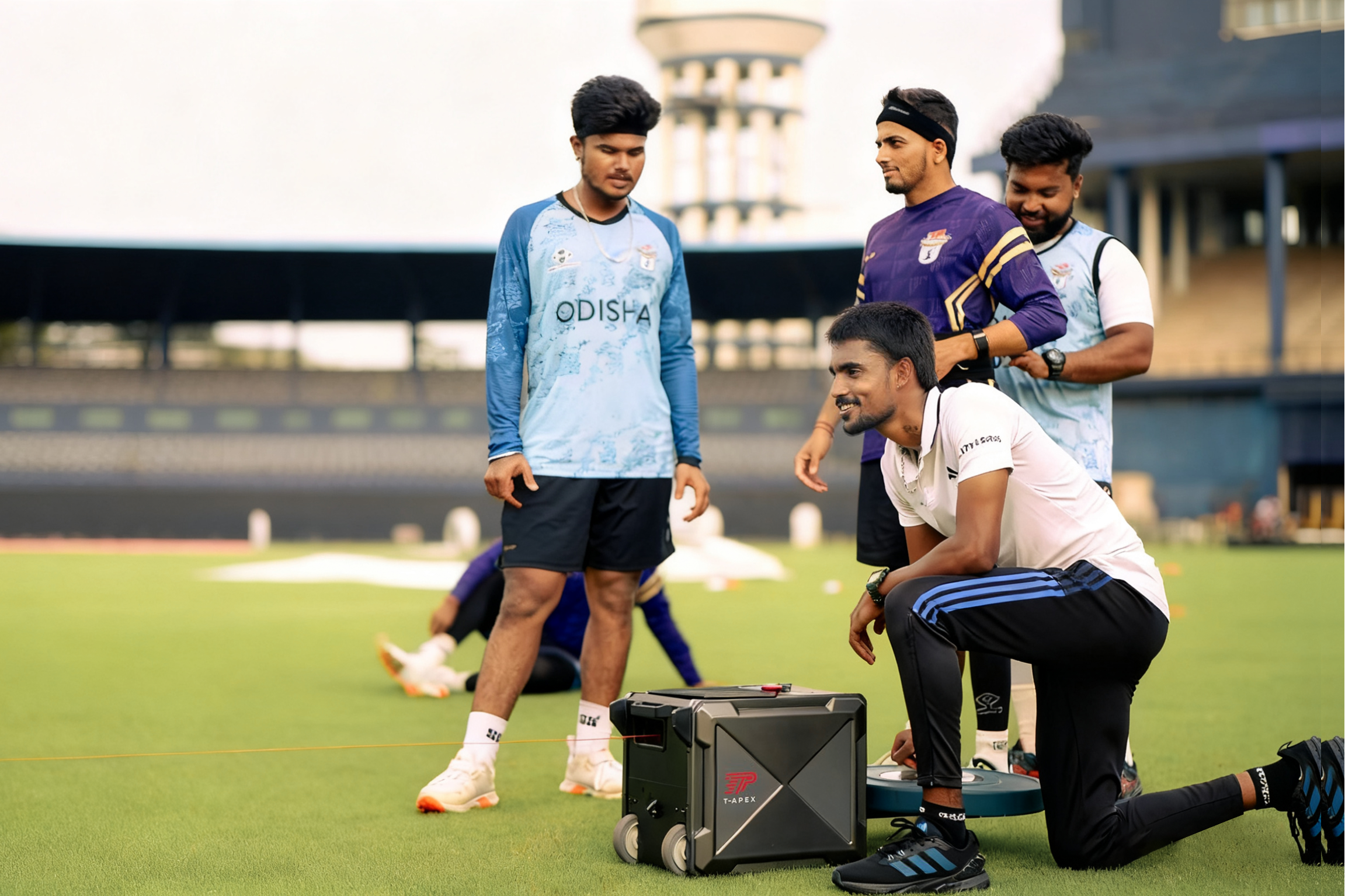Intro — Why Acceleration Defines Soccer Performance
Soccer is a game punctuated by rapid stops and explosive turns, not sustained speed. Each of these movements demands that a player master their momentum—absorbing the force of a stop before driving forward again with precision.
Once players can manage that control — through focused eccentric and tempo work — the next step is learning to rebuild speed efficiently. It’s about turning balance and strength into quick, usable acceleration on demand.
That’s where T-APEX comes in. Its adaptive resistance and real-time feedback bridge the gap between strength and motion, helping athletes accelerate with smoother transitions, better timing, and measurable improvement in every session.
The Science of Acceleration — Phase-by-Phase Speed Building
True acceleration is not a single movement; it’s a sequence of distinct phases that connect rhythm and mechanics.
- Early Drive (0–5m): Generating explosive power from a low stance and mastering drive angle control.
- Transition (5–15m): Coordinating stride frequency and ground contact timing while maintaining posture.
- Max Velocity (15m+): Extending stride length and sustaining stability as neural control takes over.
It's common to see players train the first step or the full sprint, yet overlook the vital transition that connects them. Lasting speed isn’t just about a quick launch; it’s built step by step, through controlled, efficient acceleration after the initial burst.
How Smart Resistance Accelerates the Process
Acceleration in soccer rarely happens from a static start — it follows a stop, a turn, or a deceleration phase. Smart resistance bridges this transition, training athletes to regain speed faster and cleaner after braking or changing direction.

Resisted Re-Acceleration
In real play, players accelerate out of a defensive recovery or after a cut. T-APEX simulates this with adjustable isotonic resistance:
– Moderate tension during the first 3–5 meters to rebuild momentum under load.
– Smooth resistance reduction as velocity increases, ensuring natural stride frequency.
Result: faster acceleration resumption and better force application through the first few steps.
COD & Braking Integration
Using dual-anchor setups (“Z” or “T” paths), athletes train both eccentric braking and re-acceleration rhythm in one sequence. The motor introduces a short eccentric delay, forcing the athlete to stabilize posture before re-driving forward.
This improves neuromuscular coordination and reduces time lost between deceleration and drive phases.
Assisted Overspeed Transition
Once control and posture are solid, the assistance mode provides light forward pull, helping players experience supramaximal stride turnover.
This builds neural familiarity with faster step timing and smoother transition to top speed.
Together, these drills train the entire “control → drive → speed” chain. Instead of just making players stronger, T-APEX teaches them how to turn braking stability into forward acceleration — the essence of match-winning explosiveness.
Training Flow & Data-Driven Insights
Acceleration doesn’t replace control — it extends it. A well-structured plan moves from stability to precision, and finally to measurable velocity.
Session Structure Recommendation
– Warm-up / Control Phase: Low-resistance rhythm drills focusing on posture and landing control.
– Main Sets / Transfer Phase: Medium-load resisted sprints or COD runs to convert braking strength into drive.
– Finisher / Acceleration Phase: Light or assisted sprints to maximize step timing and velocity.
Metrics for Review
– Peak Velocity: Indicates explosive capacity and progression week-to-week.
– RMS Power: Reflects consistency and rhythm stability.
– Time-to-Peak: Shorter time shows improved acceleration efficiency.
– Distance-to-Peak: Less distance means better force application early in the sprint.
Coaching Insight
After each session, review the speed curves.
Smooth curve = rhythm control.
Higher peak = improved power output.
The goal isn’t just higher numbers, but maintaining rhythm as speed rises — that’s efficient acceleration.
“From control to drive, from drive to speed — every phase is measurable, repeatable, and ready to refine.” — Luis Jeronimo, MLS Performance Specialist
What “Efficient Acceleration” Really Means: From Control to Power
From mastering rhythm to mastering speed, T-APEX allows every pull of resistance to be seen, measured, and improved—bridging the space between control and performance, turning every drive phase into an opportunity to refine precision.
Control keeps you steady. Acceleration takes you ahead.


